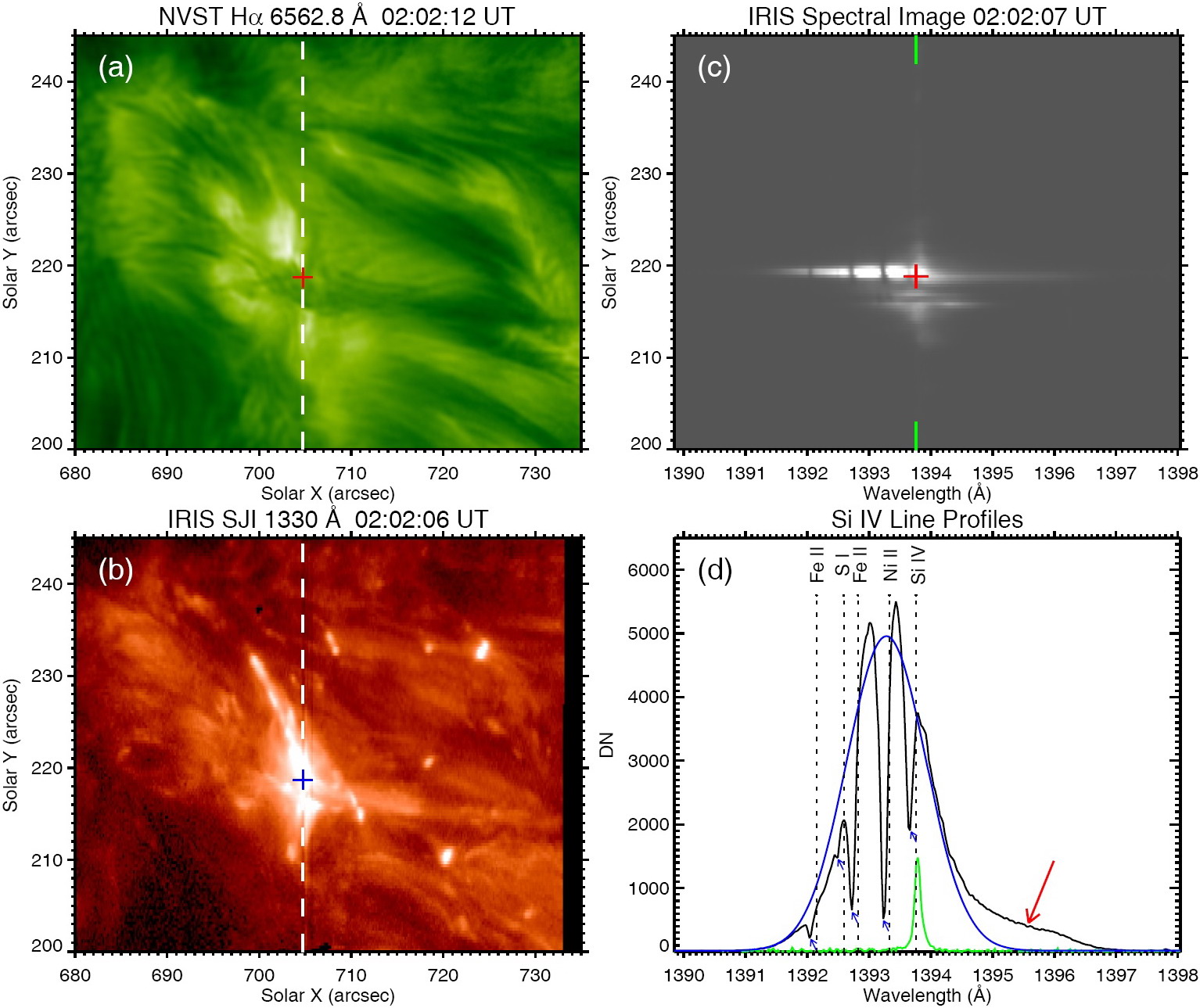
Fan-spine magnetic topology is favorable for the occurrence of solar flares through null-point reconnection.
A research group led by Prof. YANG Shuhong from the National Astronomical Observatories of Chinese Academy of Sciences (NAOC) conducted the first simultaneous imaging and spectral study on the null point of a fan-spine magnetic topology during a solar flare.
They used high-resolution imaging and spectral observations from the New Vacuum Solar Telescope (NVST), the Solar Dynamics Observatory (SDO), the Interface Region Imaging Spectrograph (IRIS), and the Geostationary Operational Environmental Satellite, as well as the high-quality vector magnetograms from the Hinode.
Their findings were published in The Astrophysical Journal on July 28.
Prof. YANG's group extrapolated the coronal structures based on the observed photospheric magnetogram, and confirmed the existence of the fan-spine topology.
"The breakout-type magnetic reconnection first occurred at the null point, and consequently the flux rope within the fan began to rise and erupt," said Prof. YANG.
The cooler material within the flux rope moved along the longer field lines to the remote end of the spine, resulting in the remote brightening.
Before and after the flare peak, the total velocity of the outflows was estimated to be about 60 km/s. At the flare peak time, the total velocity of the material outflows from the reconnection site was found to be 144 km/s.
The researchers found that there were several deep absorption lines superposed on the Si IV line profile, and they had the same blue shift of -0.1 angstrom. The reason was inferred to be that the bright reconnection site observed in the ultraviolet channel was located under the cooler material appearing as dark features in the Hα line.
The blue shifted absorption lines indicated that the cooler material moved toward the observer with the velocity of 22 km/s. The depth of the absorption lines depended on the amount of cooler material.
These results imply that this kind of spectral profiles can be used as a tool to diagnose the properties of cooler material above reconnection site. Moreover, the shift of the absorption lines can be used to convert the digital number in the Hα Doppler gram to the Hα Doppler velocity.

Fig. 1 Sketch of the magnetic structures illustrating the breakout-type reconnection at the null point of the fan-spine (Image by NAOC)

Fig. 2 Simultaneous imaging and spectral observations from the NVST and IRIS (Image by NAOC)

86-10-68597521 (day)
86-10-68597289 (night)

52 Sanlihe Rd., Xicheng District,
Beijing, China (100864)

